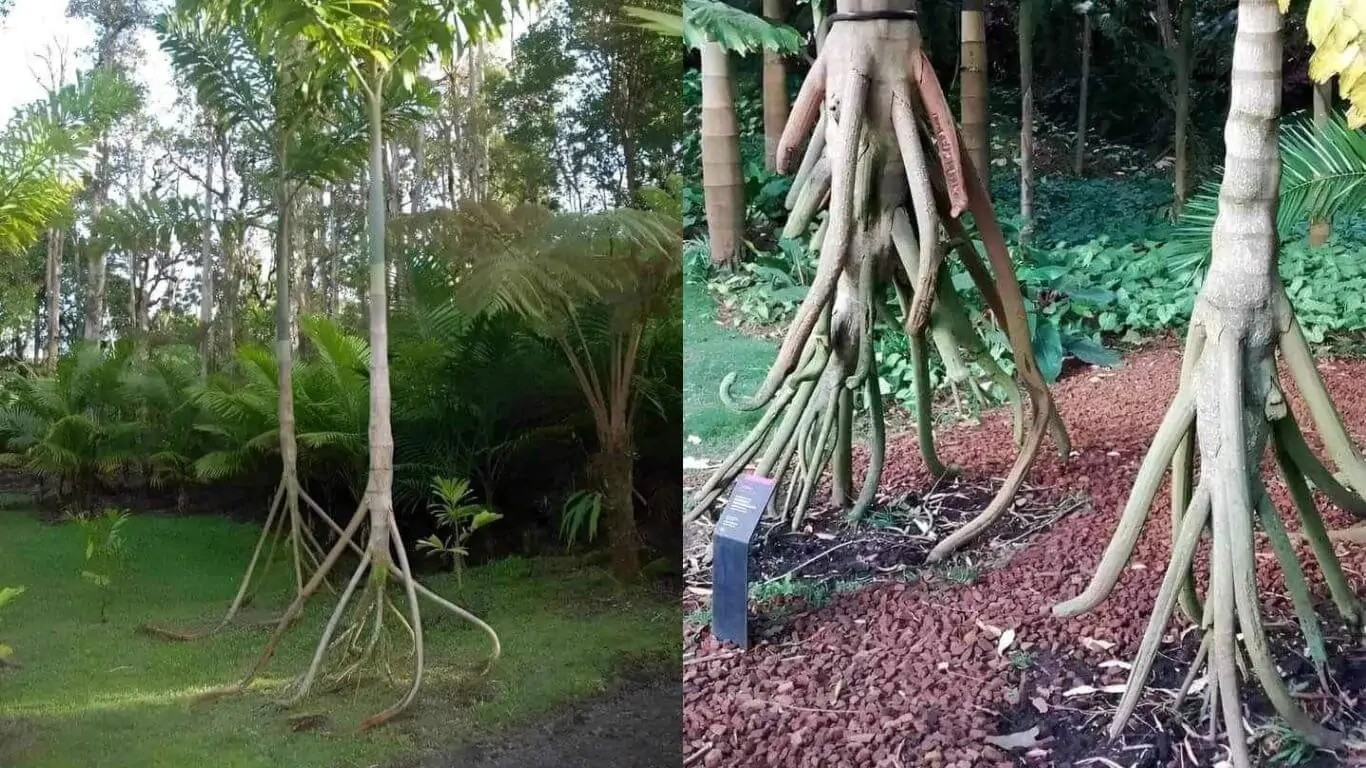Introduction
Imagine a tree that can walk. Yes, you heard that right! Deep within the lush rainforests of Central and South America, there exists a tree that has fascinated scientists and locals alike with its peculiar ability to “move” across the forest floor. Meet the Socratea exorrhiza, popularly known as the walking palm. This intriguing tree has sparked many myths and scientific debates. But what makes it so unique? Let’s dive into the mysteries of this extraordinary tree and uncover the secrets of the walking palm.
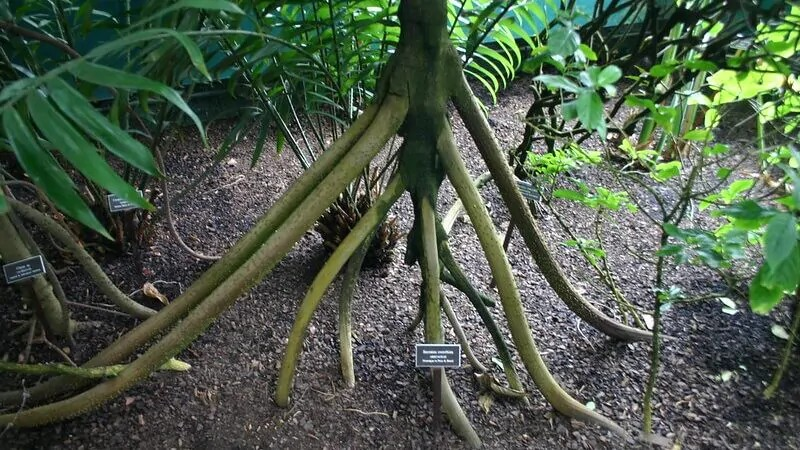
Photo Credit – https://flic.kr/p/ah24VB
Botanical Description
General Characteristics
Standing tall and proud, the Socratea exorrhiza can reach heights up to 25 meters. Its slender trunk, adorned with rings of scars from fallen leaves, is a sight to behold. But what truly sets this tree apart are its stilt roots. These roots arch out from the base, giving the tree an otherworldly appearance. Native to the tropical rainforests of Central and South America, the walking palm thrives in humid, dense forest environments where other plants struggle to survive.
Unique Features
The walking palm’s stilt roots aren’t just for show. They provide stability on the uneven, often swampy forest floor. But there’s more to these roots than meets the eye. Some believe they allow the tree to “walk” towards sunlight, moving slowly but surely over time. This extraordinary feature has made the walking palm a subject of much curiosity and wonder.
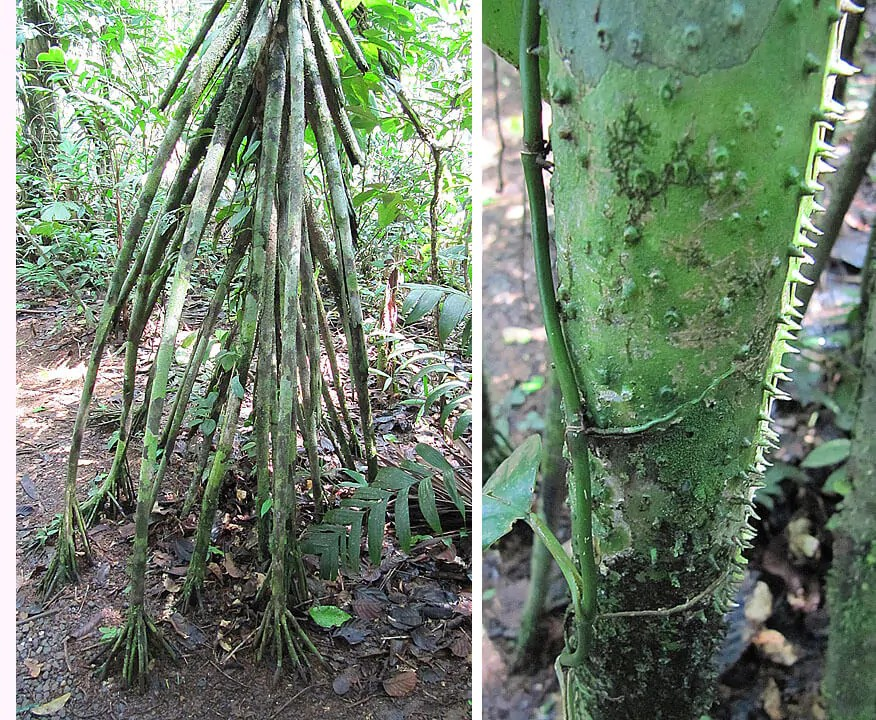
Photo Credit – https://flic.kr/p/hX1rPc
The Walking Phenomenon
Myth vs. Reality
Stories of the walking palm have been passed down through generations. Locals tell tales of the tree uprooting itself and moving to sunnier spots. But is there any truth to these tales, or are they just part of the rich tapestry of rainforest folklore? While scientists have yet to observe a tree on the move, there’s a fascinating theory behind these stories.
Mechanism of Movement
The walking palm’s stilt roots grow in such a way that they seem to “step” towards better growing conditions. When a root on the shady side of the tree dies, a new root sprouts on the sunny side, effectively shifting the tree ever so slightly. This slow, methodical process could be what gave rise to the legend of the walking palm. It’s like nature’s version of inching towards the light.
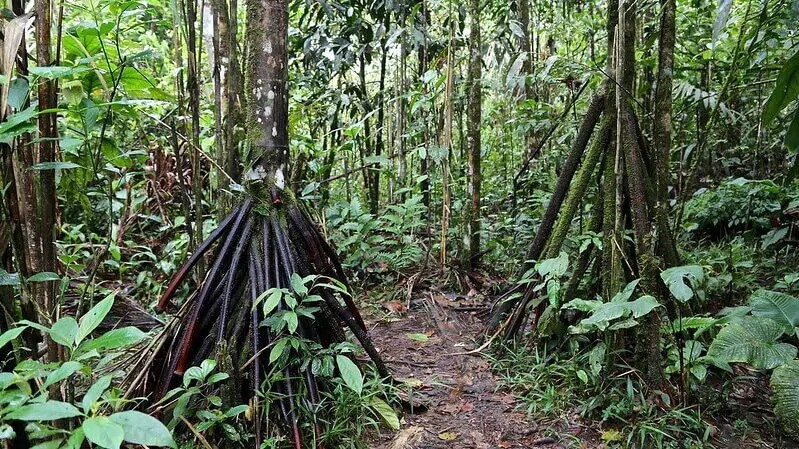
Photo Credit – https://flic.kr/p/MMJLtM
Scientific Studies and Evidence
Scientists have conducted various studies to better understand this phenomenon. While there’s no concrete evidence of the tree actually “walking,” the idea that it adapts to its environment by growing new roots in favourable directions is well-supported. The walking palm might not be walking as we know it, but it’s definitely making a move!
Ecological Role and Adaptations
Ecological Significance
The walking palm plays a vital role in its ecosystem. Its stilt roots create a unique microhabitat, providing shelter for small animals and insects. The tree’s fruits are a food source for various rainforest creatures, contributing to the complex web of life in the tropical forest.
Adaptations to Environment
Surviving in the dense, competitive environment of the rainforest isn’t easy. The walking palm’s stilt roots help it stay upright in the swampy soil and potentially allow it to move towards better conditions. This adaptability gives it an edge in the survival game, showcasing nature’s incredible ingenuity.
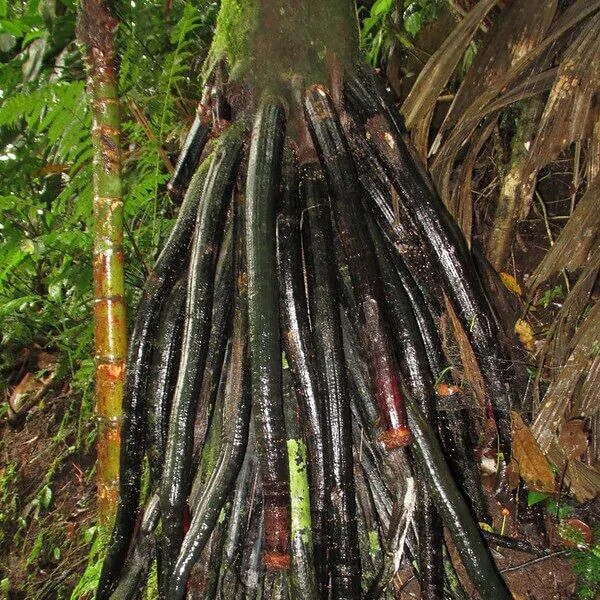
Photo Credit – https://flic.kr/p/hP1Hmo
Cultural and Symbolic Importance
Indigenous Beliefs and Uses
In people’s traditions, the walking palm tree carries cultural importance. Some see it as a plant with its spirit. Its timber is utilized in constructing homes and making implements, and various parts of the tree have purposes. The walking palm is more than just a tree; it plays a role in people’s everyday existence.
Symbolic Representation
The walking palm is often featured in local folklore and myths, symbolizing resilience and adaptability. Its unique ability to “move” resonates with the idea of navigating life’s challenges, making it a powerful symbol in storytelling and cultural practices.
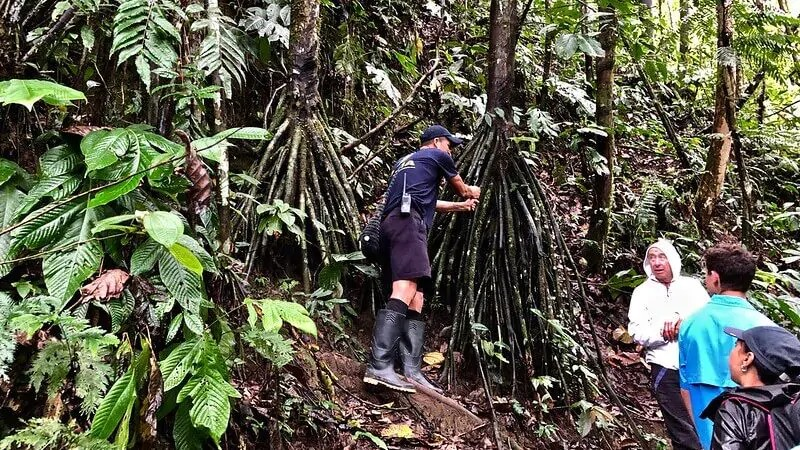
Photo Credit – https://flic.kr/p/2fnfBaF
Conservation and Threats
Current Conservation Status
Despite its unique features, the walking palm isn’t safe from threats. Habitat destruction due to deforestation and climate change poses significant risks to its survival. Efforts are being made to protect this remarkable tree, but more work is needed.
Threats to Survival
Activities undertaken by humans, like deforestation and land clearing, pose risks to the walking palm tree. Furthermore, the changing climate is impacting the rainforest setting, creating challenges for these trees to flourish. It is imperative to safeguard their habitat in order to secure their existence.
Conservation Efforts
Local and global initiatives are underway to conserve the walking palm. Community involvement is critical, with sustainable practices being promoted to protect this and other vital rainforest species. Education and awareness are also essential in fostering a sense of responsibility towards preserving these natural wonders.
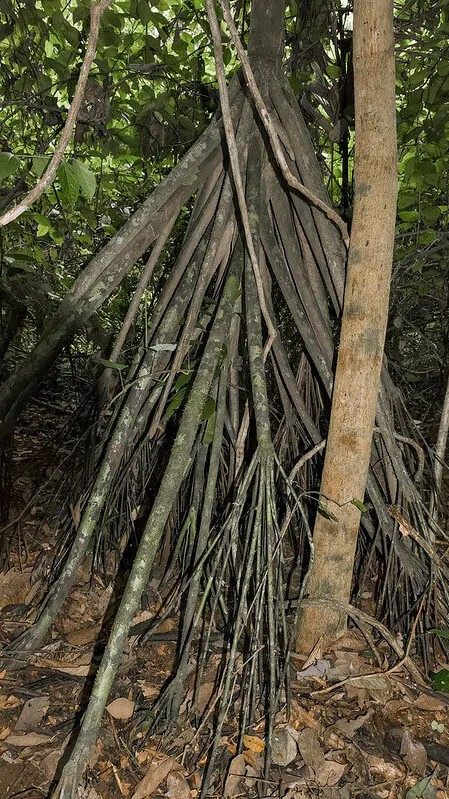
Photo Credit – https://flic.kr/p/2nkGLSP
Future Research and Questions
Unanswered Questions
Despite our growing understanding, many questions remain about the walking palm. How exactly do its stilt roots contribute to its mobility? What other adaptive strategies does it employ to survive in the rainforest? These questions beckon further research.
Potential Discoveries
Future studies could unveil even more about the walking palm’s unique abilities. New findings could shed light on plant behaviour and adaptation, offering insights into the incredible diversity of life on Earth. Who knows what other secrets this enigmatic tree holds?
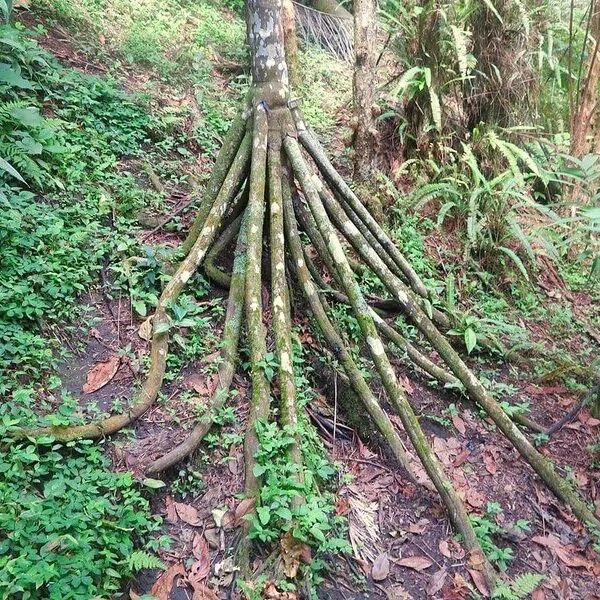
Photo Credit – https://flic.kr/p/2hV8bSD
Conclusion
The walking palm, with its mysterious stilt roots and potential for movement, is a testament to the wonders of nature. Its story is one of adaptability and resilience, reflecting the intricate balance of life in the tropical rainforest. As we continue to learn more about the Socratea exorrhiza, let’s remember the importance of preserving such unique species. The walking palm might not walk in the way we imagine, but its journey through the forest is a captivating tale of survival and adaptation.
